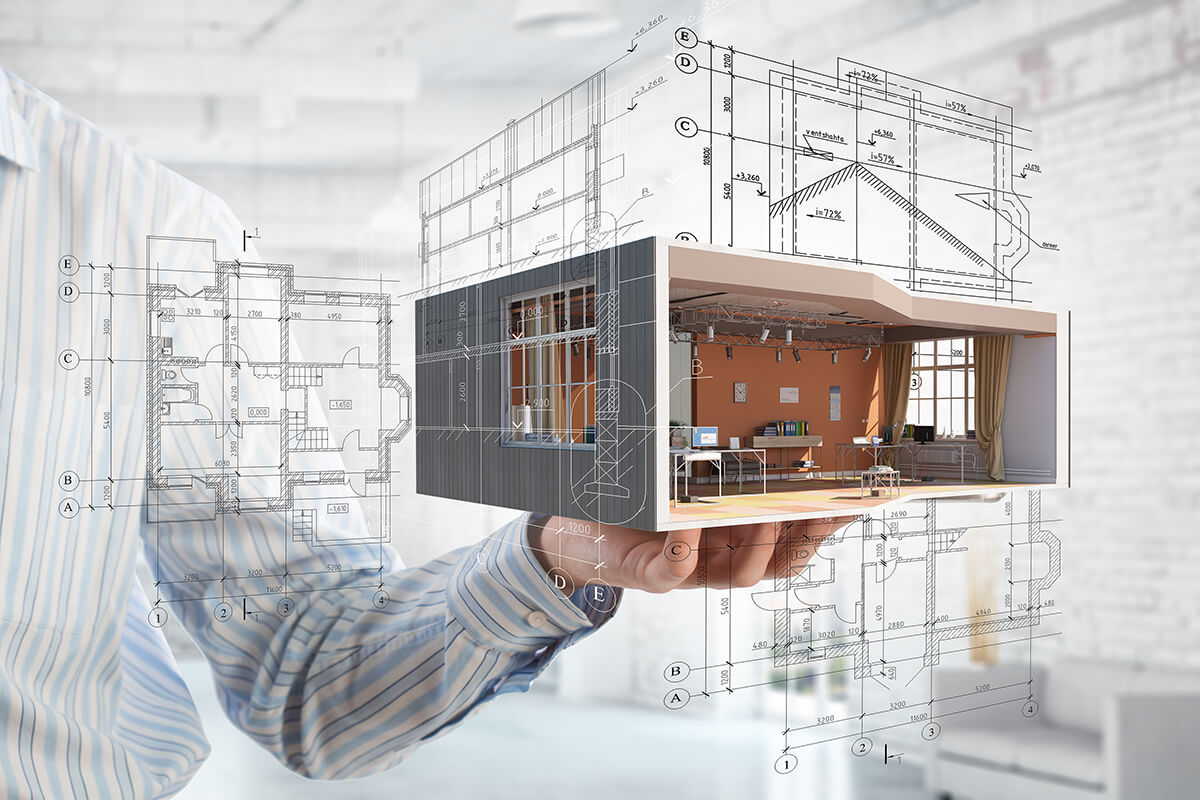Architect Marketing Strategies to Engage Luxury Clients
Architect Marketing Strategies to Engage Luxury Clients
Blog Article
Recognizing the Diverse Job Paths Available for Aspiring Architect
As an ambitious Architect, you have a globe of profession paths waiting for you. Whether you're drawn to standard design or the nuances of sustainable layout, there's a niche that straightens with your interests.
Conventional Architecture: Designing Buildings and Structures
Conventional design concentrates on designing buildings and frameworks that blend performance with aesthetic appeal. As you discover this field, you'll value the detailed balance between kind and purpose. You'll discover to attract inspiration from historical styles, including elements like balance, materials, and workmanship. Your designs can mirror cultural heritage, showcasing neighborhood customs while meeting modern requirements.
You'll establish abilities in preparing, model-making, and site analysis, enabling you to imagine and connect your concepts efficiently. Involving with customers, you'll require to comprehend their vision and translate it right into practical styles.
In addition, building codes and sustainability methods are crucial in your work, guaranteeing your frameworks are ecologically pleasant and safe. As you grow in your occupation, you'll discover possibilities in property, industrial, or also remediation projects, each offering unique difficulties. Embracing traditional design paves the way for a satisfying occupation that pays homage to the past while shaping the future.
Urban Planning: Forming Neighborhoods and Public Spaces
As an ambitious Architect, you can play an essential role as a city organizer, transforming exactly how areas work and engage. By utilizing neighborhood interaction methods, you'll ensure that residents have a voice fit their setting. And also, incorporating lasting design concepts will aid produce rooms that not just satisfy today's requirements yet also secure the future.
Function of Urban Planners
While many may assume of architects as the single visionaries behind structures, urban planners play a vital duty in forming the broader landscape of areas and public areas. They assess land use, zoning legislations, and neighborhood requires to create sustainable settings that boost top quality of life. By teaming up with different stakeholders, you'll aid make parks, transportation systems, and houses that advertise social communication and availability. Urban organizers additionally concentrate on environmental considerations, ensuring that developments incorporate environment-friendly rooms and support biodiversity. Your knowledge in spatial style and area dynamics permits you to envision future development while protecting social heritage. In this essential function, you'll directly affect exactly how people experience their environments, making every job a possibility for positive modification.
Area Involvement Approaches
Efficient community involvement approaches are crucial for city coordinators to assure that the voices of residents are listened to and valued in the planning process. To foster significant dialogue, you need to focus on open forums and workshops where community participants can share their ideas and concerns. Use surveys and social networks to reach a more comprehensive audience, ensuring varied perspectives are included. Collaborating with local organizations can enhance count on and help with much deeper links. It is essential to offer clear information regarding proposed tasks and decision-making processes, permitting locals to really feel enlightened and empowered. By proactively listening and integrating responses, you'll produce spaces that reflect the neighborhood's demands, ultimately resulting in more successful and sustainable city atmospheres. Embrace transparency and continual discussion for long-term effect.
Sustainable Layout Principles
When making city rooms, integrating sustainable layout principles is critical for producing environments that grow both ecologically and socially. Consider integrating eco-friendly areas, like gardens and parks, to boost biodiversity and enhance air high quality.
Creating with water preservation in mind is additionally key-- consider rain gardens and absorptive surface areas to take care of stormwater. Entailing area members throughout the planning process guarantees that the spaces you create meet their needs and encourage social interaction. By embracing these concepts, you'll contribute to lively, lasting metropolitan landscapes that benefit everyone.

Landscape Design: Producing Lasting Exterior Environments
As you explore landscape style, you'll uncover important style concepts that develop lovely and useful outdoor spaces. Sustainable methods play an important function in ensuring these atmospheres thrive while decreasing environmental impact. And also, you'll discover a range of occupation possibilities that allow you to make a real distinction in exactly how individuals connect with nature.
Style Concepts in Landscape
Understanding style concepts in landscape style is necessary for creating sustainable outside environments that balance with nature. You'll need to ponder elements like equilibrium, range, and proportion to ensure your styles feel cohesive and welcoming. Incorporating indigenous plants not just boosts biodiversity however also minimizes water use, making your landscape resistant. Consider the flow of area and just how people connect with it; pathways and seating locations should welcome expedition and relaxation. Additionally, take note of seasonal changes, creating with products that match the surroundings year-round (Architect). By focusing on sustainability and aesthetic appeals, you can develop exterior spaces that improve the community and advertise wellness. Welcoming these concepts will certainly set a strong foundation for your job in landscape style.
Sustainable Practices Introduction
Sustainable techniques in landscape style not only concentrate on appearances yet likewise prioritize ecological health and wellness and resource preservation. By incorporating indigenous plants, you boost biodiversity and minimize the need for chemical fertilizers and chemicals. Carrying out reliable irrigation systems aids preserve water and decreases overflow, securing nearby communities. You can develop spaces that promote dirt health and wellness, such as using natural materials and exercising permaculture concepts. Furthermore, incorporating environment-friendly infrastructure, like rain yards and permeable sidewalks, aids in stormwater administration and lowers urban heat. When you create outdoor settings with sustainability in mind, you add to a healthier planet and supply areas that foster neighborhood connection. Inevitably, these techniques guarantee your layouts benefit both people and the setting for many years to find.
Profession Opportunities Expedition
With a strong foundation in sustainable practices, landscape design offers a range of job courses that allow you to make a purposeful impact on the environment. Urban coordinators usually collaborate with landscape engineers to produce green spaces in urban settings, improving city livability. If you're enthusiastic about education and learning, consider ending up being a landscape architecture teacher, inspiring future generations.
Lasting Layout: Concentrating On Eco-Friendly Practices
As you explore your job in design, embracing environmentally friendly techniques can establish you apart in a competitive field. Sustainable layout concentrates on creating buildings that minimize ecological effect while improving passenger health. By incorporating renewable materials, energy-efficient systems, and lasting building strategies, you'll add to a greener future.
Begin by getting knowledge of eco-friendly accreditations like LEED or BREEAM, which can bolster your qualifications. Consider just how all-natural light, ventilation, and thermal performance can optimize design. Team up with engineers and ecological consultants to introduce remedies that reduce waste and conserve sources.
Don't fail to remember the significance of neighborhood participation-- interesting regional stakeholders can motivate layouts that integrate with the setting. As customers increasingly focus on sustainability, your competence in eco-friendly practices will not only bring in projects yet also accomplish your interest for responsible design. Accept this vital facet of the occupation, and enjoy your job prosper.
Historical Conservation: Securing and Bring Back Cultural Heritage
While you commence on your architectural trip, take into consideration the crucial duty of historical preservation in maintaining our cultural heritage. This area concentrates on the security and remediation of significant structures, websites, and structures that tell the tales of our past. By involving in historic preservation, you'll aid secure the architectural legacy that forms area identification.
As a historic conservation Architect, you'll examine historical relevance and assess the problem of structures. You'll function very closely with guardians and historians to ensure genuine repair techniques are used. This career course permits you to blend creative thinking with research study, allowing you to develop remedies that respect initial products and workmanship.
Your job not just adds to sustainability by recycling existing structures however Continued also promotes a feeling of satisfaction within areas. Accepting this course will assist you come to be a guardian of background, preserving the tales and appearances that enrich our lives.
Interior Design: Enhancing Indoor Spaces
Historical preservation and interior design both share a dedication to enhancing the built atmosphere, however they concentrate on various elements. While historic preservation highlights maintaining a framework's social and historic value, interior design absolutely nos in on maximizing interior spaces for performance and appearances.
As an aspiring Architect, you'll find that interior architecture enables you to blend creative thinking with technological abilities. You'll make rooms that not just look excellent but also promote comfort and efficiency. This field involves understanding exactly how light, shade, and products connect within a room, influencing state of mind and use.
You'll deal with different jobs, from property homes to industrial offices, making sure that each atmosphere satisfies the requirements of its residents. By prioritizing user experience, you can change insides right into inspiring and functional areas, making a considerable influence on how individuals communicate with their environments. Embrace the opportunity to boost interior environments and shape the means individuals live and work.
Industrial Layout: Merging Performance With Aesthetic Appeals
Industrial layout plays an essential duty in producing products that perfectly mix looks with performance, ensuring that what you use day-to-day is not only aesthetically attractive but additionally sensible. As a hopeful Architect, you can engage on your own in this field, concentrating on developing everything from furnishings to consumer electronic devices. Your work includes understanding individual needs, products, and manufacturing processes, permitting you to create cutting-edge services that boost everyday experiences.
In commercial design, you'll usually work together with producers, great post to read marketing professionals, and designers, guaranteeing that your designs are not only attractive but likewise practical. You'll find out to balance type and function, focusing on use without giving up style. By honing your skills in mapping out, 3D modeling, and prototyping, you'll be well-appointed to bring your concepts to life. This job course provides a vibrant setting where imagination meets functionality, making it a satisfying selection for engineers interested in shaping the products of tomorrow.
Frequently Asked Questions
What Educational Qualifications Do I Required to End Up Being an Architect?
To come to be a designer, you'll require a professional level in design, typically a Bachelor's or Master's. In addition, you'll have to finish an internship and pass the Architect Enrollment Evaluation to exercise lawfully.
Exist Accreditation Demands for Various Architectural Job Paths?
Yes, there're accreditation needs for different architectural courses. Architect. You'll need to pass examinations, complete internships, and sometimes pursue specialized training, relying on your chosen focus, like landscape style, metropolitan style, or historical conservation
What Software Abilities Are Vital for Engineers Today?

Just How Can I Gain Practical Experience While Examining Style?
You can get practical experience by interning at building firms, joining style competitions, offering for community jobs, or collaborating with schoolmates on real-world assignments. These possibilities improve your abilities and build beneficial connections in the market.
What Job Opportunities Exist Outdoors Typical Design Firms?
You can discover various task possibilities outside typical design companies, like urban planning, interior decoration, landscape architecture, building and construction administration, realty development, or even duties in sustainability consulting. Each deals unique difficulties and incentives.
Whether you're drawn to standard style or the subtleties of sustainable design, there's a particular niche that aligns with your rate of interests.When making city spaces, incorporating sustainable style principles is important for developing settings that thrive both ecologically and socially.As you explore landscape design, you'll uncover important design principles that produce useful and stunning exterior spaces.Comprehending style principles in landscape architecture is vital for creating sustainable outdoor environments that harmonize with nature.In industrial layout, you'll often collaborate with online marketers, producers, and engineers, guaranteeing that your designs are not just stunning however also feasible.
Report this page